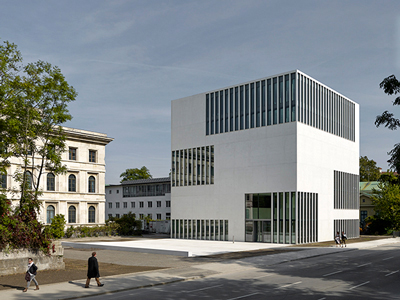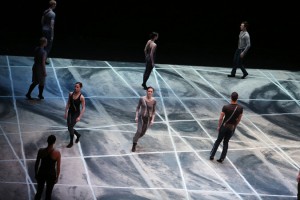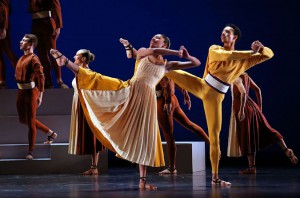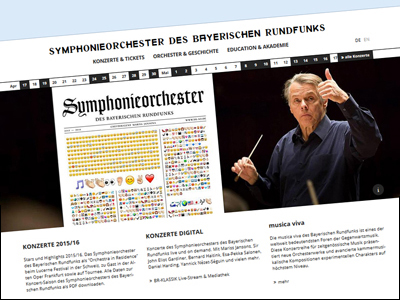By Robyn Guilliams
GG Arts Law and GG International are in the process of hiring a new administrative assistant. As I’ve been reviewing applications, I’m sad to say that I am shocked – shocked! – at the very poor quality of some of the cover letters and resumes we’ve received.
So, as a public service to all of you “young’uns” out there who are searching for a job in the performing arts field, or for those of you who already work in the arts and would like to move up the ladder as quickly as possible, I’d like to offer a bit of advice – some pitfalls to avoid – when submitting a cover letter and resume to a potential employer:
- Spelling errors: This is the most prevalent problem, and the one that is most easily remedied. Do not rely on spell-check, people! Proof-read your letter and resume, and then proof them again. I realize we all make the occasional spelling mistake (my own emails are proof of this), but the documents you submit as your job application are the only criteria by which you are judged for a job, at least initially. If you won’t take the time to proof-read your letter and resume, this tells me everything I need to know about what kind of employee you will be. When I see these types of errors, the letter and resume immediately go into the recycling bin.
- Writing Style: The ability to write well is required for many jobs in our industry. (And even if not, it’s a great skill to have!) A number of the cover letters we’ve received, while not being grammatically incorrect, are very awkwardly written. I highly recommend “The Elements of Style”, by William Strunk and E.B. White, to anyone wishing to improve his or her writing skills. This book is a great resource for young professionals who want to learn to communicate more effectively through writing.
- Irrelevant Job Experience: Tailor your resume to the job for which you’re applying. There is no reason to include work experience that is completely irrelevant. For instance, don’t include in your “employment history” your job as a bag-boy at Piggly Wiggly when you were 14 years old. I don’t care. Don’t tell me about working as a ball-girl for your college softball team. Seriously. Nothing about that work experience is going to make me say, “This is the person we’ve been looking for!”
- Try to keep your resume to one page. Unless your professional career began at age eight, you probably don’t have enough relevant content to justify a longer resume. Keep in mind – there’s no need to write a long narrative describing the responsibilities of each of your jobs. Bullet points will do. And, please, please, don’t use an 8-point font in an effort to cram everything on to one page. I’m old, and I can’t read anything written in an 8-point font unless I hold the page an inch from my face. I don’t like doing this. It’s annoying, and it makes me feel old.
- Don’t include the details of your entire professional life in your cover letter. This is why you attach a resume. Pick a few items from your resume that are directly relevant to the job for which you are applying, and include a detail or two about each experience. Your cover letter should be no more than three paragraphs, and should be concise. As I’m reviewing 150 letters and resumes, and I come across your two-page, ten-paragraph cover letter, I’ll want to stick a fork in my eye. I already don’t like you. (This really isn’t the reaction you’re looking for from your potential employer, is it??)
- Avoid hyperbole in your cover letter. Don’t tell me about your “extensive” experience in whatever. If you are in your early twenties, it’s highly unlikely that you have extensive experience in anything. (See above regarding the one-page resume.) Along the same lines, don’t tell me about your “professionalism”, “strong work ethic” or “integrity”. I see these descriptions so often that they’re virtually meaningless. And don’t describe yourself as “an ideal fit” or “exceptionally qualified” (particularly when you are not at all qualified). Your resume will speak for itself in this regard.
- Don’t describe yourself as “detail-oriented” in your cover letter. (This goes over especially badly when your letter is riddled with typos.) When applying for a job, everyone describes themselves as detail-oriented. Who the heck is going to say “I’m not so great with details”? I can get an idea of your attention to detail from how carefully you’ve crafted your resume and cover letter, the types of jobs you’ve held in the past, and your responsibilities in those jobs.
- In your cover letter, there’s no need to write about how “passionate” you are about the arts, how much you love going to the theater, or that Beethoven’s Eroica is your favorite musical work. This is not your OkCupid profile. Everyone goes into our field because we feel strongly about the arts, and we wouldn’t be happy working in any other field. Your education, work history and other relevant experiences will show that you are committed to a career in the arts!
We’re excited about the prospect of bringing on someone new, although we’re sad that our current assistant, Ann, is leaving. Take care, Ann – we’ll miss you!
_________________________________________________________________
For additional information and resources on this and other  legal, project management, and business issues for the performing arts, visit ggartslaw.com
legal, project management, and business issues for the performing arts, visit ggartslaw.com
To ask your own question, write to lawanddisorder@musicalamerica.org.
All questions on any topic related to legal, management, and business issues will be welcome. However, please post only general questions or hypotheticals. GG Arts Law reserves the right to alter, edit or, amend questions to focus on specific issues or to avoid names, circumstances, or any information that could be used to identify or embarrass a specific individual or organization. All questions will be posted anonymously and/or posthumously.
__________________________________________________________________
THE OFFICIAL DISCLAIMER:
THIS IS NOT LEGAL ADVICE!
The purpose of this blog is to provide general advice and guidance, not legal advice. Please consult with an attorney familiar with your specific circumstances, facts, challenges, medications, psychiatric disorders, past-lives, karmic debt, and anything else that may impact your situation before drawing any conclusions, deciding upon a course of action, sending a nasty email, filing a lawsuit, or doing anything rash!







Berlin’s Dark Horse
May 1st, 2015By ANDREW POWELL
Republished: May 4, 2015
MUNICH — Word around town has it that Christian Thielemann holds the biggest committed block of votes heading into next Monday’s Berlin Philharmonic election. The rest, so the scuttlebutt goes, divide widely, in part reflecting the musicians’ open-nomination process.
That this Chefdirigent transition is much discussed up here in Bavaria comes as a surprise. The Berliners years ago lost their dominance among German orchestras, notably with the return to glory of the older Leipzig Gewandhaus and Dresden Staatskapelle, which since reunification in 1990 have been solidly funded by their Saxon Government and are now routinely televised under their conductors Riccardo Chailly and Thielemann.
But discussed it is, probably out of happy fascination that a body of 124 tenured musicians actually enjoys the freedom in this corporate-political world to determine its own artistic path. The process certainly beats officials deciding, or a clubby mixed committee. If voting on May 11 yields no “clear majority,” a shortlist will be drawn up and a second round held, at which time the less committed will shift. Naturally the winner has the option of declining the offer.
Another surprise, two weeks ago, was Mariss Jansons’ casual comment during the Bavarian Radio Symphony Orchestra’s season news conference to the effect that “we will see what happens” in Berlin. It had been assumed here that the 72-year-old was not a candidate, considering the health problems that led him to resign from Amsterdam’s Concertgebouw Orchestra. Apparently he is.
Thielemann would be the first German to hold the lofty post since Wilhelm Furtwängler died 61 years ago, no minor consideration in this resurgent and recently enlarged nation. He might be perfect for it. Imaginative and commanding, magnetic and familiar, he would bring skills in Schumann, Brahms, Bruckner and Strauss that are unquestioned.
More pertinently he appears the best-attached of any potential candidate to prospects for robust earned incomes for the players, what with the global viewership he pulls in Dresden and the rapture he engenders in such disparate places as Beijing and Baden-Baden, Abu Dhabi and Vienna.
But for several reasons the Thielemann candidacy could collapse. He sits pretty at present in the refurbished Saxon capital, tied majestically to Salzburg through leadership of the Herbert von Karajan-founded Easter Festival, and so he may push for too much from an interested Berlin, for instance by seeking lifetime tenure in emulation of Karajan. Rumored to be right-wing politically, and not shy, he may open his mouth in ways that portend headaches for Berlin’s politicians, city or federal: he already has, in fact, in guarded support of the anti-Islam Pegida movement, crossing Angela Merkel’s position.
Most ruinously, and quite realistically, the entrenchment of his voting support among the musicians may produce an equally stubborn, larger, anyone-but-Thielemann faction that would only need to agree on someone else.
The divided nature of the non-Thielemann vote points to the dilemma facing the Berliners should electing him prove impossible. Far from a glittering array of options, the promise is of awkward rounds of eliminations driven by commercial requisites, institutional pride and vital timeframes. These are clear enough to seem to leave just one candidate, a dark horse as the grapevine discussions presently go.
To state the obvious, the orchestra needs a renowned, enthusiastic, hugely talented money-maker. Someone it can successfully promote and who can reciprocate. Someone who can put in a decade or more on the job, history suggests. The choices thin out abruptly.
Age, health, or crested fame surely bars Daniel Barenboim, Herbert Blomstedt, Chailly, Charles Dutoit, Bernard Haitink, Marek Janowski, Jansons, James Levine, Zubin Mehta, Mikhail Pletnev, Stanislaw Skrowaczewski, Michael Tilson Thomas. What kind of signal about the future would such an appointment send? Sensibly, and maybe on advice, Barenboim has publicly withdrawn.
Conversely the Berlin organization takes itself too seriously to reach down to the unknown, as the Los Angeles Philharmonic once boldly did with Esa-Pekka Salonen, and in any case has no Ernest Fleischmann to guide and impose such an initiative. Even if it could, a number of superb young conductors have not yet proven themselves in the orchestra’s core repertory (and indeed Salonen never did): Lionel Bringuier, Constantinos Carydis, Eivind Gullberg Jensen, Tomáš Hanus, Michele Mariotti, Diego Matheuz, Vasily Petrenko, Krzysztof Urbański.
No, the Berlin Philharmonic is restricted to what should be a plentiful middle field: men and women mainly in their 40s and 50s. The talent is there, as always, but the “names” are few thanks to a generational blip in the star system.
Reputations used to be sealed by the record industry, where imagery, repertory assignments and regimentation by label created and conferred prestige — not least on the future Berlin Chefdirigents Karajan, Claudio Abbado and Simon Rattle (all using English orchestras).
But when the industry imploded after 1990, so did this system. And two exceptions to the implosion do nothing for Berlin’s musician-voters today: in the Russian repertory, where pent-up demand for Western-controlled recorded surveys (suddenly enabled under the coincident Yeltsin regime) catapulted the name Valery Gergiev; and in the ongoing period-instrument movement, elevating William Christie, John Eliot Gardiner, Marc Minkowski and lesser talents.
The result is a dearth of famous conductors in precisely the age group Berlin must select from now. Stéphane Denève? Thomas Hengelbrock? Manfred Honeck? Known and most worthy, but not today the stars they would have become had the labels continued with their earlier promotional practices.
The names that can be shortlisted soon dwindle upon mundane consideration. Gustavo Dudamel, Gergiev, Riccardo Muti and Yannick Nézet-Séguin are contracted elsewhere until at least 2020. A Briton to follow a Briton would not sit well politically, nixing Ivor Bolton, Gardiner, Daniel Harding and Antonio Pappano. Limited appeal in Germany precludes Myung-Whun Chung, while Simone Young has rather overstayed in Hamburg. Nor can the musician-voters take someone who has stormed out: Fabio Luisi or Franz Welser-Möst.
Electing a conductor who is just getting started in another job, or on a sure separate trajectory, would cast the Berliners as unimaginative poachers, ruling out Iván Fischer, Philippe Jordan, Andris Nelsons, Kirill Petrenko and Tugan Sokhiev. And despite the admirable broadening of the orchestra’s operational scope under Rattle, it would never work to bring in a specialist: Giovanni Antonini, Christie, Emmanuelle Haïm, Minkowski.
Tough and vague, but key, is the matter of charisma. Rattle has little of it, and this fact has gnawed away below the patina of the Berlin brand, a mistake not to repeat. Star quality — promotability — is not the first strength of several theoretical contenders for this grand post: Marin Alsop, Semyon Bychkov, James Conlon, Andrew Davis, Ádám Fischer, Alan Gilbert, Louis Langrée, Ludovic Morlot or David Robertson.
Deduction, then, leaves one feasible conductor of renown. He’s thought of as Russian but in fact is Russian-German, having come to this country as a teenager. His name does not immediately come up in the context of this transition because he is little associated with the Berlin Philharmonic: he has led just a few concerts with the orchestra — his last program, in 2011, featured the rare Das klagende Lied — perhaps a cleverly planned fact that will allow non-Thielemann consensus, there being no “damage.” The players know him further, however, through other engagements in Berlin, where he happens to live, and no doubt through personal interactions. This season he conducts the Rundfunk-Sinfonie-Orchester, the Konzerthaus-Orchester, and at the Komische Oper.
He may well be a friend of Rattle’s. The two have Glyndebourne Festival Opera in common and serve as principal artists of London’s period-instrument Orchestra of the Age of Enlightenment. If he is Rattle’s own idea of the right successor, the incumbent is assuredly now gauging and conveying the interests on both sides.
Tactful and politically astute, he maintains ties to two Moscow orchestras yet manages to stay out of the fray over Vladimir Putin, and after years as music director of Glyndebourne he made a public point of praising the festival as a place to work. Diplomacy goes far in a capital city.
His repertory is cosmopolitan, even if weighted toward Russian and German music. He is not celebrated for Haydn or Mozart but does embrace period-instrument practices. At the same time, he remains intellectually curious, venturing Schnittke’s Third Symphony for example this season. Critics are generally positive, especially in London, where his Brahms made waves two seasons ago for its traditionalism, but also in New York (Hänsel und Gretel and Die Frau ohne Schatten at the Metropolitan Opera) and Philadelphia, where he regularly guests.
Interestingly his present contract as principal conductor and artistic advisor of the London Philharmonic ends at the same time as Rattle’s in Berlin. Where will he be May 11? At home, probably. He conducts the Komische Oper’s Moses und Aron the night before. So a prediction: if naysayers thwart Thielemann in the vote, or his own hubris does, the next Chefdirigent of the Berlin Philharmonic will be Vladimir Jurowski.
Photo (modified) © Sheila Rock
Related posts:
Petrenko to Extend in Munich
Jansons! Petrenko! Gergiev!
Winter Discs
Petrenko Hosts Petrenko
Munich-Berlin: 4 Hours by Rail
Tags: Berlin Philharmonic, Christian Thielemann, Commentary, Mariss Jansons, Simon Rattle, Vladimir Jurowski
Posted in Munich Times | Comments Closed